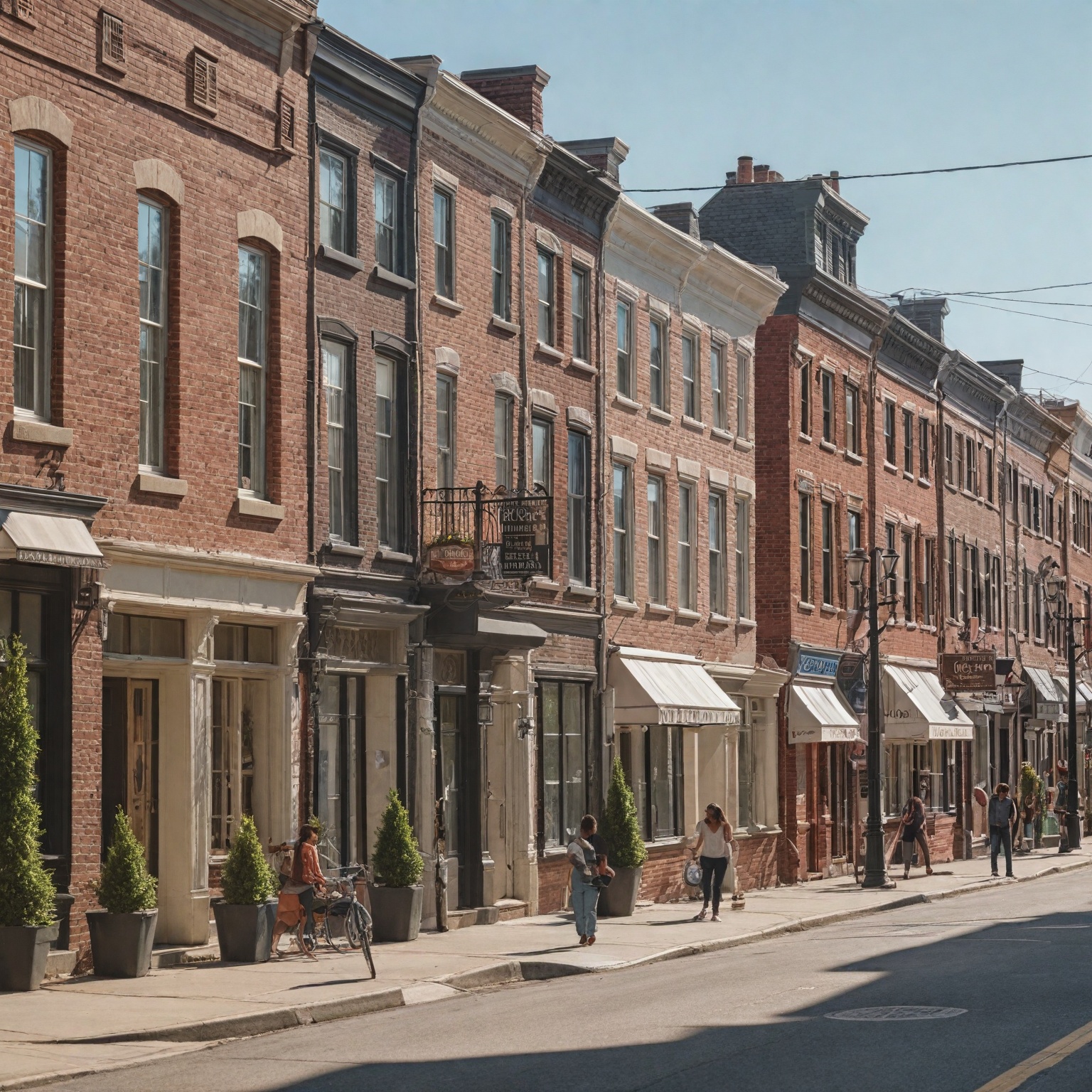Summary
Mortgage rates, which reflect the cost of purchasing a home or leveraging home equity, have experienced significant fluctuations in recent years. The process of determining mortgage rates is complex, influenced by various economic factors including inflation, economic growth, Federal Reserve activities, housing market conditions, and the financial health of the borrower. These rates reached record lows during the global pandemic, before bouncing back to a steady 7 percent by 2025. Despite these shifts, the rates are not historically high, with the average mortgage rate since 1971 being 7.72 percent.
The future trajectory of mortgage rates remains uncertain, influenced by economic conditions and inflation levels. Major forecasts suggest a decrease in rates for 2025, though there is potential for an unexpected rise. The potential impact of further rate drops could complicate home buying and affect housing prices. The demand for mortgages is influenced by these fluctuations, as well as economic factors and the monetary policy of the Federal Reserve.
Despite lower rates potentially boosting demand, the demand for mortgages has fallen short of expectations in recent times. This trend is influenced by factors such as inflation, Federal Reserve activities, and housing market status. Further impacting this is the uncertainty in the market, with changing government policies affecting labor markets, interest rates, and the availability of building supplies, thereby indirectly affecting mortgage demand.
In conclusion, the significant fluctuations in mortgage rates, driven by a myriad of complex factors, have led to a dynamic and unpredictable housing market. This has implications for prospective homebuyers, who need to consider potential shifts in rates when planning their purchases.
Overview of Mortgage Rates
Mortgage rates have witnessed significant fluctuations over the years, hitting record lows during the pandemic and bouncing back to a steady 7 percent by 2025. The determination of mortgage rates is a complex process, influenced by a myriad of economic factors rather than directly set by a single entity. These rates reflect the cost of using a mortgage to purchase a home or leverage home equity and, consequently, influence real estate prices and housing wealth.
Factors Influencing Mortgage Rates
Five major elements affect the mortgage rate environment, all tied to the basic principles of supply and demand. They include inflation, economic growth, Federal Reserve activity, the housing market, and the borrower’s financial health.
Historical Perspective on Mortgage Rates
Despite these shifts, it’s crucial to note that current rates are not historically high. Recorded since 1971, the historical average of mortgage rates sits at 7.72 percent. In the first month of 2025, the average rate for a 30-year mortgage was at 6.71%, showing an increase from the preceding month.
For instance, lower interest rates could stimulate housing markets by creating more demand and incentives for developers. The Federal Reserve guides the economy with the goals of promoting job growth and keeping inflation under control. Although it does not set specific interest rates in the mortgage market, the federal funds rate influences interest rates for long-term loans, including mortgages.
Mortgage rates are also affected by various economic growth indicators like gross domestic product (GDP) and the employment rate. When economic growth leads to higher wages and increased consumer spending, this creates more demand for mortgage loans, driving up mortgage rates. Conversely, a decline in home purchasing due to fewer homes being built or put up for resale can push interest rates downwards.
Inflation also plays a significant role in setting mortgage rates. If the annual inflation level is 2%, but mortgage rates are at 5%, the real return on a loan in terms of the purchasing power of the dollars the lender gets back is only 3%. Therefore, mortgage lenders closely monitor the rate of inflation and adjust rates accordingly.
Future Trends and Speculations
The future trajectory of mortgage rates remains uncertain, with most major forecasts expecting a decrease in 2025. However, these trends will largely depend on economic conditions. For example, rates could potentially fall into the 5% range, but a big drop could also signal a larger economic downturn. Rates could also unexpectedly rise if inflation starts to climb again. Analysts are predicting that the 30-year fixed mortgage rate will hover between 6% and 7% for the next two years. Nevertheless, due to volatile fluctuations in these forecasts, predicting the future outlook for mortgage rates remains challenging.
The potential impact of a further rate drop could complicate homebuying, potentially impacting fall home prices and affecting competition. Therefore, prospective homebuyers need to consider these potential outcomes when planning their purchase in the face of falling mortgage rates.
Understanding Demand for Mortgages
The demand for mortgages is influenced by a range of complex economic factors, which in turn determine mortgage rates. Other economic factors that can significantly impact mortgage rates include inflation, economic growth, and housing market conditions.
It’s also important to note that uncertainties in the market, such as changing government policies, can also affect the demand for mortgages. These changes can impact the labor market, interest rates, and availability of building supplies, all of which can indirectly affect the demand for mortgages.
Falling Short of Expectations
The anticipation of a downturn in the global economy, prompted by domestic tariffs and cost-cutting measures, has led to a surge in bond demand, consequently causing mortgage rates to fall. Such reduced rates could not only increase the number of potential homebuyers but could also significantly boost the housing inventory from its current baseline. However, a further drop in rates could complicate homebuying by potentially impacting fall home prices negatively.
While the past few years saw analysts predicting lower mortgage rates due to an expected recession, higher long-term interest rates are currently being observed due to the U.S. economy outperforming expectations. Employment and GDP growth, significant economic fundamentals, are exceeding expectations, leading to higher mortgage rates.
Factors like inflation, economic growth, Federal Reserve activity, and the housing market status all significantly influence mortgage rates. The bond and housing market conditions indirectly affect mortgage lenders’ charges. For instance, a decrease in housing inventory demand often results in a drop in mortgage rates.
Inflation, in particular, can critically impact the mortgage rates. When inflation is high, the dollar’s purchasing power decreases. Thus, high inflation rates can have a worrying effect on mortgage repayments. The Federal Reserve plays a vital role in managing these conditions. Their monetary policy decisions affect overall financial conditions, including the availability and cost of credit in the economy.
Fixed mortgage rates are influenced by investor appetites, particularly for 10-year Treasury bonds, and persistent inflation levels higher than the Federal Reserve’s 2% target. Uncertainty in the market often leads investors to buy Treasury bonds, driving yields and mortgage rates downward. In conclusion, understanding these economic trends and planning accordingly is crucial for anyone looking to buy a home or refinance their mortgage.
The content is provided by Harper Eastwood, Financial Pulse Now


























